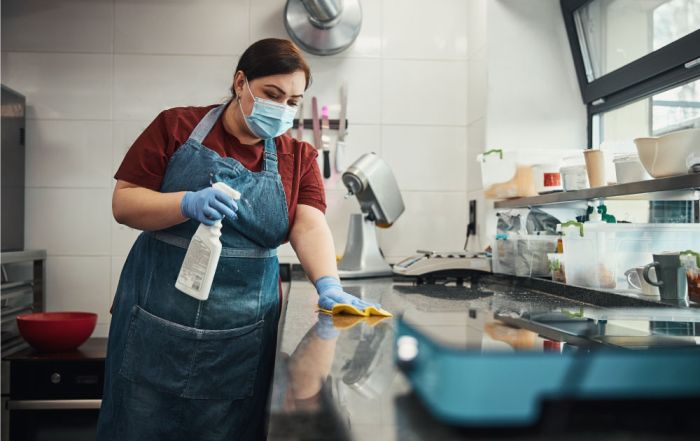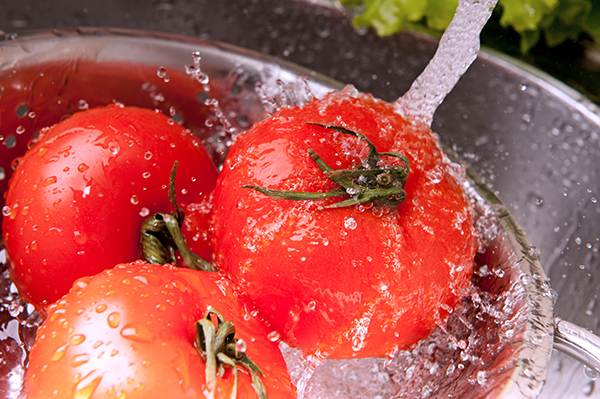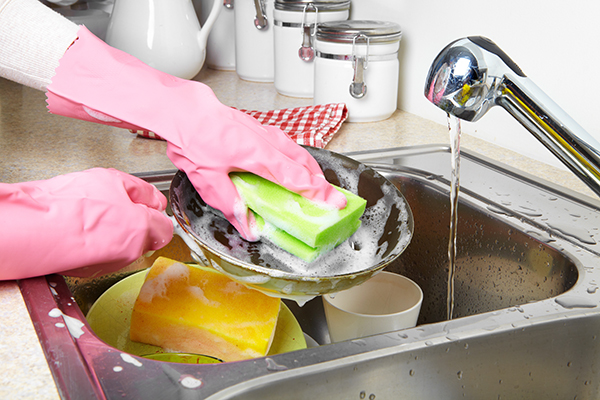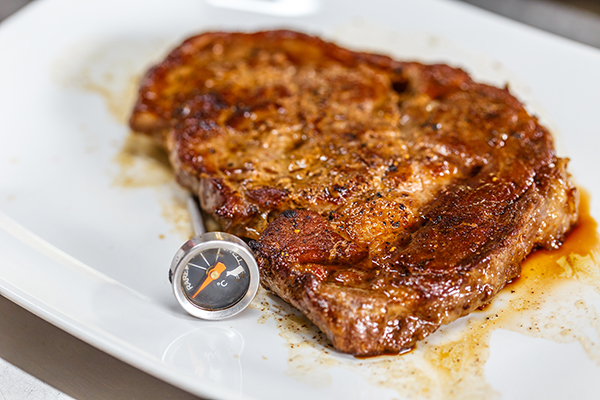Keep Ready-to-Eat Foods Safe
In our first blog for February, we identified some of the risks with ready-to-eat foods. RTE does not mean risk free! We pointed out that food processors have implemented food safety plans that use good manufacturing and good handling practices (GMPs and GHPs). Foodservices often purchase RTE foods to avoid some risk in-house. In fact, many schools do not purchase raw protein foods because of risks from under cooking and cross-contamination. But there are still risks from temperature abuse due to improper holding and from contamination that occurs intentionally, or unintentionally, from employee practices or unclean equipment.
So, what prevention steps can be taken? Avoiding temperature abuse means having calibrated temperature measuring devices readily available and staff knowing how to use these. It means knowing which foods need to be kept out of the temperature danger zone (remember that is between 41°and 135°F) as well as recognizing end-point cooking temperatures for the specific food item, and keeping hot foods hot and cold foods cold.
Defending the safety of food means it being stored in secure locations or closely monitored. Using the “see something, say something” approach prevents unauthorized people from causing harm. Controlling access to food storage and production areas to employees and having staff in public service areas monitoring the action and being a presence can reduce risks. So, if you have a self-serve food bar, schedule employees to be out front. The bonus is they can keep the area clean and replenish supplies, and provide a visible presence.
Avoiding unintentional contamination means storing the food correctly to keep it safe. Staff who are in good health following good hygiene practices and who don’t directly touch the food with their bare hands is key to risk prevention. FoodHandler has several good videos on these topics for staff. The current Model Food Code, released in 2017, states that food handlers should not touch ready-to-eat foods with their bare hands and that suitable utensils such as deli tissue, spatulas, tongs, single-use gloves, or dispensing equipment should be used. Use of these tools provides a barrier between hands and the food, thereby minimizing some of the risk.
Gloves are an easy to use solution to providing this barrier. In fact research has found that customer perceptions improved if gloves were worn by food workers. Risk nothing!
Making sure utensils and surfaces in contact with the RTE food are clean and sanitized, and haven’t been re-contaminated by dirty hands reduces risk of pathogen transfer.
Food safety fundamentals of temperature controls, good employee practices, and a rigorous cleaning and sanitation program are key to keeping food safe. RTE foods reduce some risks, but not all. Since we are in basketball season, we will use the adage of “the best defense is a good offense” and add, “particularly for ready-to-eat foods”.
As we say at FoodHandler, Risk Nothing!
READ MORE POSTS
Welcome to National Food Safety Education Month!
In September of each year, we not only have the opportunity to celebrate Labor Day, but we also welcome National Food Safety Education Month! It is this time of the year when it is important to remember that Foodborne illnesses are still a major concern in the United States, although I am guessing many Americans don’t think about the safety of the food they eat as they go throughout their daily lives. The statistics show one in every six Americans will suffer from a foodborne illness each year, for a total of about 48 million cases each year.
Protecting Fresh Produce Post-Harvest, Integral to Safe Food
During the height of the summer, at least in the Midwest, farmers markets are in full swing and fresh produce is plentiful. Every backyard gardener is reaping the benefits of their work, with bountiful harvests of tomatoes and cucumbers. Everyone seems to have a neighbor who is trying to pawn off his or her over-production of cucumbers or summer squash during this time of year. When picking up that produce at the farmer’s market or from your neighbor down the street, have you ever given any thought to the microbial safety of it? Honestly, even in my position, it certainly is NOT the first thing that comes to my mind. But, earlier this month, I came across a news story out of Wisconsin discussing a Salmonella outbreak associated with shelled peas sold at a local farmers market. Who would have thought shelled peas would be impacted? The story noted, and it served as a great reminder, that most outbreaks associated with Salmonella in produce are due to mistakes made in handling or transportation of produce after harvesting.
Properly Cleaning and Sanitizing: The Right Chemical Mix to Maintain Ultimate Effectiveness
A few weeks ago, my family and I had the pleasure of setting sail on a cruise vacation. It is truly one of the only ways that I find that I am able to unplug from work and relax for a small spell. However, as I walked around the ship in our post-COVID world, I couldn’t help but admire all the extra cleaning steps the staff were undertaking to keep us all as safe as possible while in the middle of the ocean with 3,000 other vacationers. All of this cleaning and sanitizing had me thinking about how we each clean and sanitize our own operations and which chemicals we chose to use.
Proper Cooking Temperature: A Basic Food Safety Measure
Each summer, we see an increase in the incidence of foodborne illnesses. Perhaps this is because of the warmer temperatures making temperature control for Time/Temperature Control for Safety (TCS) food more difficult or perhaps it is the increased amount of people who are barbequing this time of year – it is National Picnic Month, after all!










